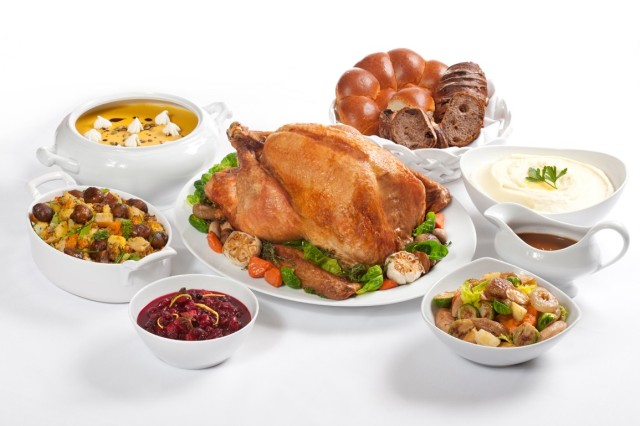
Happy Holidays, PNW Boaters: The holiday season has arrived once again. Turkey Cooking Time means it’s time for the five F’s: food, family, food, and more food. If you’re cooking this year, and especially if you haven’t cooked in a while, you already know that you’ve got a lot on your plate that’ll eventually end up on other plates- and there’s perhaps nothing more stressful than putting a bird in the oven for hours only to have it come out tasting like chewy sand.
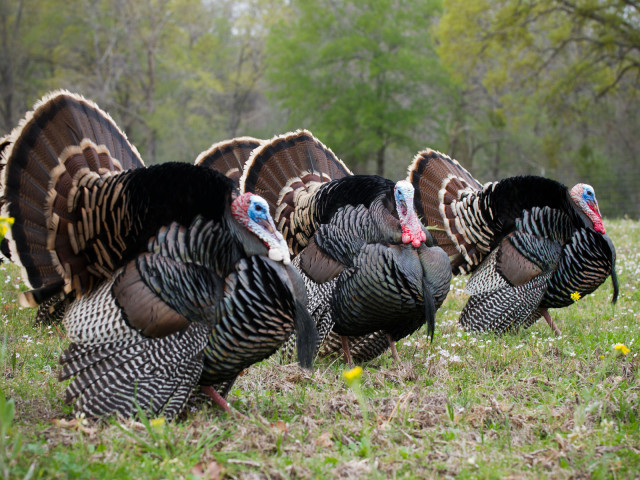
But thanks to the internet, technology, and other modern innovations, it isn’t hard to get the bird you want to taste the way you want it to. Heck, you don’t even necessarily need modern technology! Whether it’s your first big ‘ol turkey or the seven hundredth you’ve cooked in your lifetime, this advice will make sure your bird is the word.
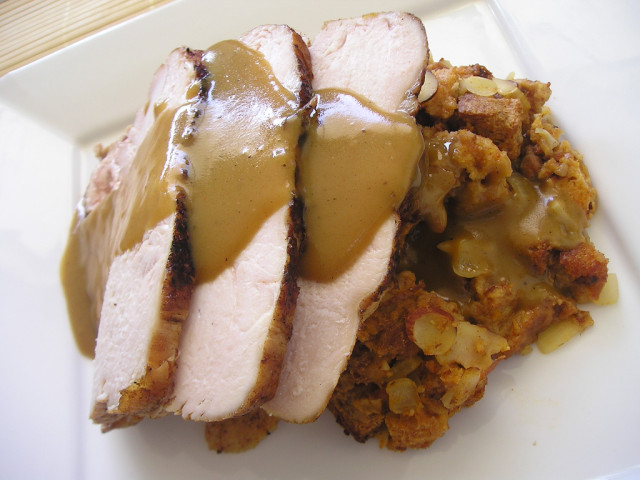
First off, you have to thaw the thing and that requires patience. Thawing it in the fridge is by and far the safest method- and methods like “put it in a bathtub and run hot water over it” are most definitely NOT so safe. As said, this means you’ll have to be patient- it takes about 4-5 days for 20-pound turkeys to get properly defrosted. If you or your family & guests prefer a crispier skin, consider unwrapping your turkey the day before you roast it, and then simply keep it uncovered in the fridge overnight.
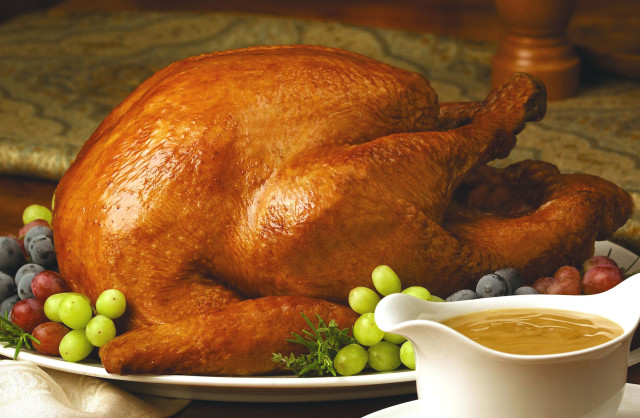
The time it takes to cook will vary greatly based on whether your turkey is bought fresh or frozen. Planning on 20 minutes or so per each pound in an oven set to 350F for defrosted turkey is generally considered to be good advice, and if you go fresh it’s just 10 to 15 minutes per pound. Don’t overstuff! You’ll end up with an unevenly cooked and uneven tasting disappointment. You can choose to add flavor trough loosely stuffing the body cavity with your favorite nice-smelling veggies – we suggest celery, carrots, garlic, or onions – or through cautious-but-generous stuffing of fresh herbs beneath the skin of the breast. Cooking stuffing in a casserole pan in the oven is also a great idea.
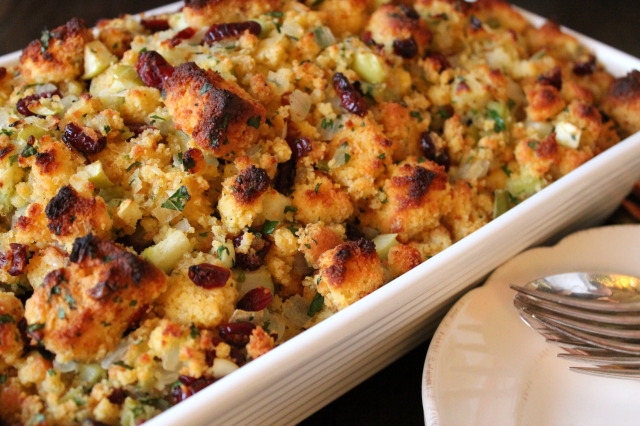
If you’re ready to roast, go ahead and blanket the turkey’s outsides with olive or vegetable oil, then season generously with salt and pepper. Cover the breast tightly with aluminum foil in order to prevent your bird from getting a bit too on the brown side. As hard as it may be, we cannot stress enough that once your turkey is getting hot in the oven that you should resist the urge to open the door up to check on things. When the temperature in the oven changes unnecessarily, that’s also increasing the chance your meat will be bone dry. If you’ve been following along with these tips, be sure to remove the foil about 45 minutes before the turkey seems done- this will allow it to brown properly.
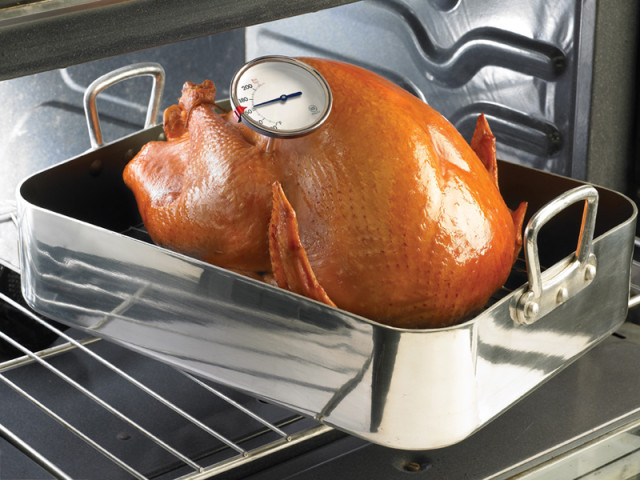
In light of recent news about the inaccuracy of pop-up timers by Consumer Reports that suggests they tend not to pop up until well after they’re supposed to, it’s best to check your bird’s temperature by using an instant-read kitchen thermometer- you’re looking for 165F at the thigh as your cue to get that thing out of the oven. For turkeys packed with stuffing, we cannot stress enough that you need to check the internal temperature of the stuffing as well- it should be a minimum of 165F too. If everything reads properly, you’re all set!
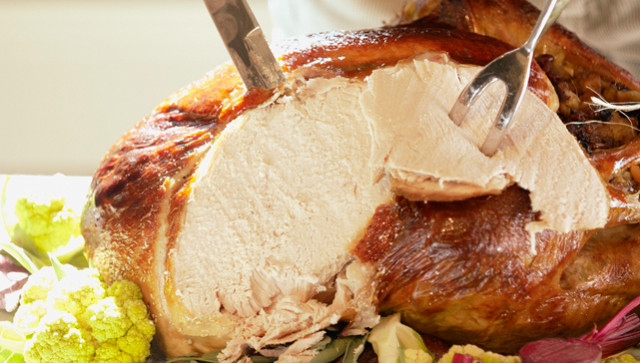
Before you carve, be sure to tent the bird with foil and give the thing a 25 minute rest. Use this time to finish up your other dishes and obligations, and know that it’s okay if you take a bit longer- if you’re tenting right, it’ll stay warm for quite a while. Be sure to sharpen up your knife or use an electric one if you’re so inclined, and enjoy your bounty of food! God bless your Thanksgiving time with Friends & Family!
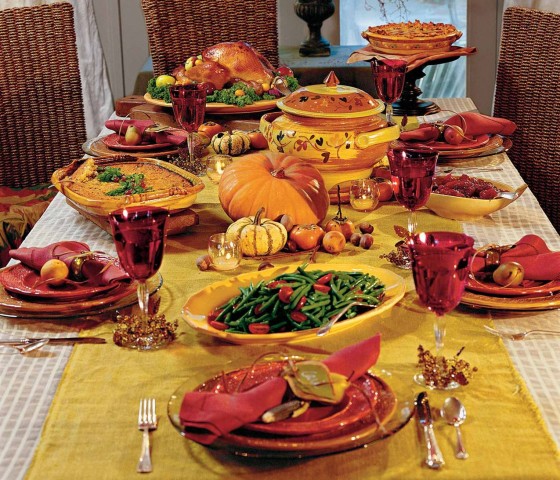
HAPPY HOLIDAYS FROM OUR FAMILY TO YOURS FROM SALTY DOG BOATING NEWS!








